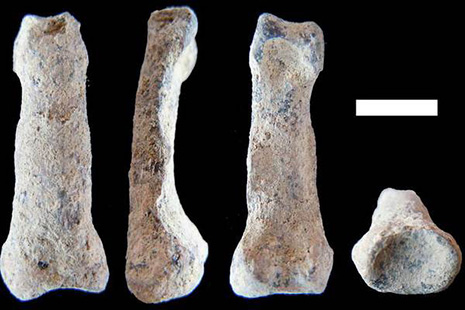A key feature that distinguishes humans from all other species alive today is the ability to make and use complex tools. This capability depends not only on the extraordinarily powerful human brain, but also the dexterity of the human hand.
"The hand is one of the most important anatomical features that defines humans," said study lead author Manuel Domínguez-Rodrigo, a paleoanthropologist at Complutense University of Madrid. "Our hand evolved to allow us a variety of grips and enough gripping power to allow us the widest range of manipulation observed in any primate. It is this manipulation capability that interacted with our brains to develop our intelligence." [The 10 Biggest Mysteries of the First Humans]
Past analysis of fossils of hominins — the group of species that consists of humans and their relatives after the split from the chimpanzee lineage — has typically suggested that ancient hominins were adapted for a life spent in the trees. For instance, ancient hominin hands often possessed curved finger bones that were well suited for hanging from branches. Modern humans are the only living higher primates to have straight finger bones.
Scientists have often suggested that modern hands evolved to use stone tools. However, recent hominin fossil discoveries have suggested a more complex story behind the evolution of the modern hand. For instance, the hand bones of some ancient hominin lineages are sometimes more similar to modern hands than those of more recent lineages are.
To learn more about the evolution of the modern hand, scientists analyzed a newly discovered hand bone dated to more than 1.84 million years ago, dug up from Olduvai Gorge in Tanzania. Previous excavations at Olduvai helped confirm that Africa was the cradle of humanity.
The new bone was probably part of the little finger of the adult left hand of an unidentified hominin lineage similar to Homo erectus, the first hominin known to regularly keep tools it made. The bone is about 1.4 inches (3.6 centimeters) long — "the same size as the equivalent bone in our hand," Domínguez-Rodrigo said.
The straightness and other features of this new bone suggest adaptations for life on the ground rather than in the trees. It adds to previous findings suggesting that several key features of modern human body shape emerged very early in hominin evolution. (This unknown hominin was not, however, a modern human.)
Before this oldest known hand-bone fossil was discovered, scientists weren`t certain when hominin hands began looking like modern hands and became specialized for manipulation. "Our discovery fills a gap — we found out that such a modern-looking hand is at least 1.85 million years old," Domínguez-Rodrigo said.
More about:
















































